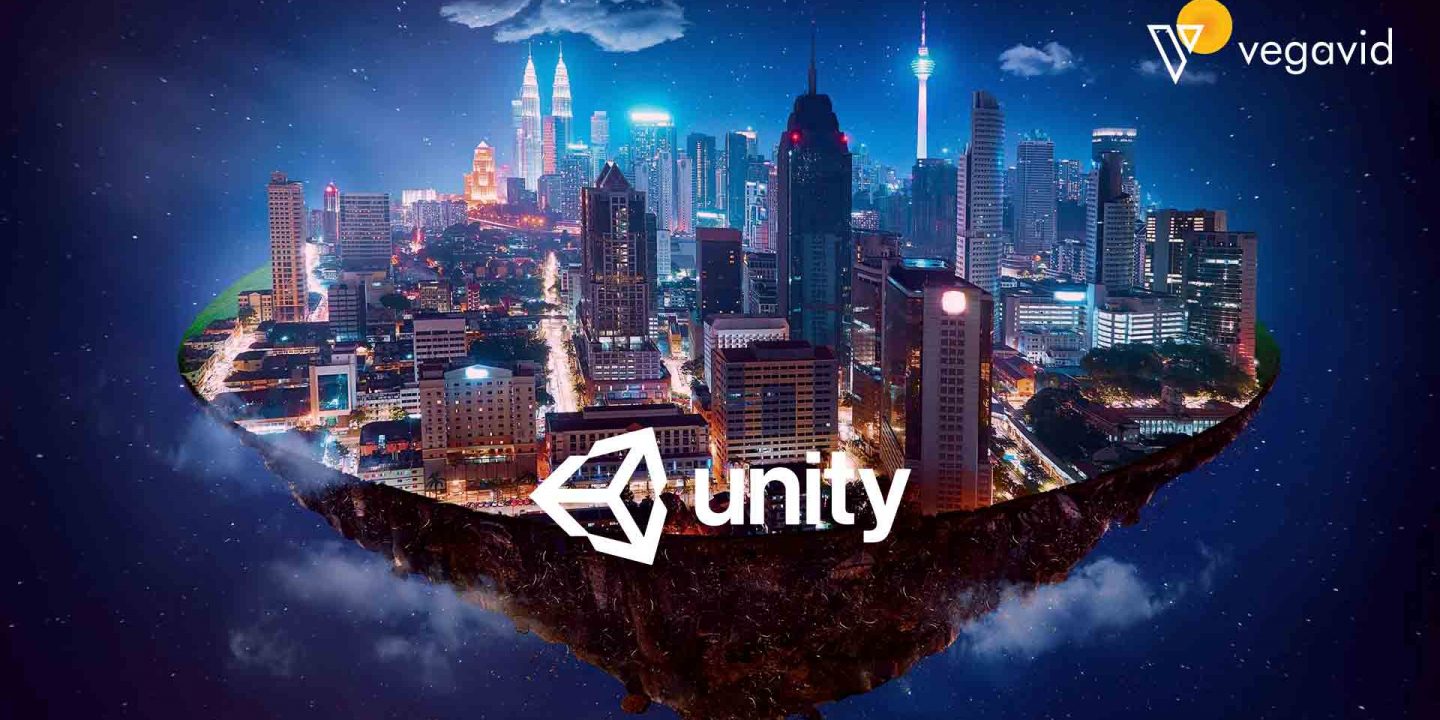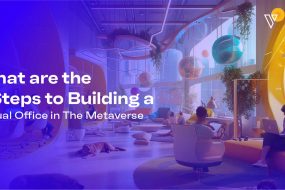
The Metaverse is a virtual world that allows users to interact and engage with one another in a virtual environment. It has gained much popularity in recent years and has become a hot topic in the world of decentralized applications (dApps). A decentralized application, or dApp, is a type of software built on a decentralized network, such as the Ethereum blockchain. It is a self-sustaining application that operates on a decentralized network, which means that any central authority or organization does not control it.
Build a Metaverse dApp with Unity
The importance of building a metaverse dApp with unity software metaverse and Unity analytics cannot be understated. Unity is a powerful game development engine that allows developers to create immersive virtual experiences. By building a metaverse dApp with Unity, developers can create virtual worlds that are decentralized, scalable, and secure. This type of application has the potential to revolutionize the way we interact with each other online, as it allows users to participate in a shared virtual world that is not controlled by any central authority.
Setting up the Unity project
You can start building your dApp; you will need to install Unity and create a new project. Unity and Unity analytics is a powerful game development engine that allows you to create interactive 3D experiences for various platforms, including VR, AR, and desktop.
Once you have installed Unity, open it and click the “Create New Project” button. This will bring up a window where you can enter the name and location of your project. Choose a descriptive name and create a new folder for your project to keep everything organized.
Next, you need to set up the project structure and file organization. This involves creating a hierarchy of folders and subfolders to store all the different types of assets and scripts you will use in your dApp. A good starting point is to create a “Scenes” folder for your level files, a “Prefabs” folder for your prefabricated game objects, and a “Scripts” folder for your custom scripts. You can also create additional folders for audio, models, and other assets. With your project structure in place, you are ready to start building your dApp!
Integrating blockchain technology
If you’re interested in building a decentralized application (dApp) within a metaverse, consider integrating blockchain technology. By using a blockchain platform, you’ll be able to create a secure and decentralized environment for your dApp, which is essential for creating a successful metaverse.
Before you start building your dApp, it’s important to research and choose the right blockchain platform. Several options are available, including Ethereum, EOS, and TRON, each with unique features and benefits. It’s important to consider which platform aligns with your project goals and technical capabilities.
Once you’ve chosen your platform, the next step is to install and set up the blockchain integration plugin for Unity. This process can vary depending on your chosen platform but generally involves downloading the plugin from the Asset Store and following the installation instructions.
With the plugin installed and set up, you can start building your dApp within Unity. This process will involve creating your metaverse environment, designing the user experience, and integrating any necessary smart contracts or blockchain functions.
Building a dApp within a metaverse can be complex, but integrating blockchain technology can make it more secure and decentralized. By researching and choosing the right platform, installing and setting up the blockchain integration plugin, and building your dApp within Unity analytics, you can create a successful metaverse experience for your users.
Designing the metaverse dApp
Designing a metaverse dApp is a complex process involving various technical and creative considerations. When designing a metaverse dApp, it’s important to start by defining the purpose and functionality of the dApp. This will help guide the design of the user interface and user experience, as well as the creation of art assets and 3D models. Other key considerations when designing a metaverse dApp include the style and theme of the dApp, the layout and navigation of the user interface, and the overall look and feel of the dApp. We will explore key points when building a metaverse dApp with unity software metaverse technologies. The following factors should be considered in the process of designing the metaverse dApp-
- Defining the purpose and functionality of the metaverse dApp: Before you start designing your metaverse dApp with Unityanalytics, it’s important to define its purpose and functionality clearly. Are you building a social platform, a gaming world, or a virtual reality marketplace? Understanding the core features and functionality of your dApp will help you design a user interface and experience that meets your users’ needs.
- Sketching out the user interface and user experience: Once you have a clear idea of what your metaverse dApp will do, it’s time to start sketching out the user interface and user experience. This includes designing the layout, navigation, and overall look and feel of your dApp. It’s important to consider how users will interact with your dApp and to design an intuitive and easy-to-use interface.
- Creating the art assets and 3D models: One of the most exciting aspects of designing a metaverse dApp is creating the art assets and 3D models that will bring your virtual world to life. This includes designing characters, buildings, and other objects that populate your dApp. It’s important to consider the style and theme of your dApp when creating these assets and to make sure they are consistent with your vision for the dApp.
Developing the metaverse dApp
Here are some essential points to consider in the process of developing a metaverse dApp with Unity technologies:
- Implementing the user interface and user experience: The user interface (UI) and user experience (UX) are crucial elements of any dApp. They determine how users interact with the application and the overall experience of using the dApp. A well-designed UI and UX will make the dApp more intuitive, user-friendly and engaging.
- Adding interactive elements and game play mechanics: To create an immersive metaverse experience, the dApp must have interactive elements and game play mechanics. These elements should encourage user engagement and make the dApp more fun and entertaining.
- Integrating the blockchain functionality into the dApp: The Metaverse is built on blockchain technology, and thus, the dApp must integrate blockchain functionality. This includes features such as smart contract execution, token transactions and secure data storage on the blockchain.
- Building the dApp with Unity: Unity is a popular game development engine that provides various tools and features to create immersive virtual reality experiences. It is an excellent choice for building metaverse dApps as it can be integrated with blockchain technology and supports various platforms, including VR and AR.
Developing a metaverse dApp requires a thorough understanding of blockchain technology and game development. By focusing on user interface and user experience, adding interactive elements and gameplay mechanics, and integrating blockchain functionality, you can build a metaverse dApp that is immersive and engaging for users. By using Unity technologies, the process of building a metaverse dApp becomes much more manageable and efficient.
Testing and debugging Metavser Dapps
Testing and debugging are essential steps in the software development process. They help ensure that your code is working as expected and help you identify and fix any errors or bugs.
Testing involves running your code through test cases to ensure it behaves correctly in different scenarios. This can include unit tests, which test individual functions or classes, and integration tests, which test the interactions between different parts of your code. By automating your tests, you can quickly and easily check that your code is working as expected and identify any issues that need to be fixed. We will discuss testing and debugging a dApp built with Unity, specifically for the Metaverse.
- Testing the dApp locally and on the blockchain platform
One of the first steps in testing a dApp is to run it locally on your development environment. This allows you to test the functionality and user interface without incurring any blockchain transaction fees. Once you are satisfied with the local testing, it’s time to deploy the dApp to a blockchain platform such as Ethereum or EOS. This step allows you to test the dApp’s interactions with the blockchain and see how it performs in a live environment.
- Debugging any issues and fixing bugs
As with any software development project, you are debugging and fixing bugs is a continuous process. When testing your dApp, you may encounter issues such as smart contract errors or issues with the user interface. It is important to use debugging tools to find the root cause of the issue and fix it accordingly. Additionally, it’s important to have the plan to handle bugs and issues that may arise in the live environment.
Conclusion
They were building a Metaverse dApp with Unity Technologies, a powerful and exciting opportunity for developers to create immersive, decentralized user experiences. Following the steps outlined in this guide, developers can leverage the Unity platform to create a dApp that utilizes blockchain technology to enable secure transactions, ownership, and user control. With the potential for limitless possibilities in the Metaverse, developers can let their imaginations run wild and create innovative, engaging dApps for the next generation of internet users.







